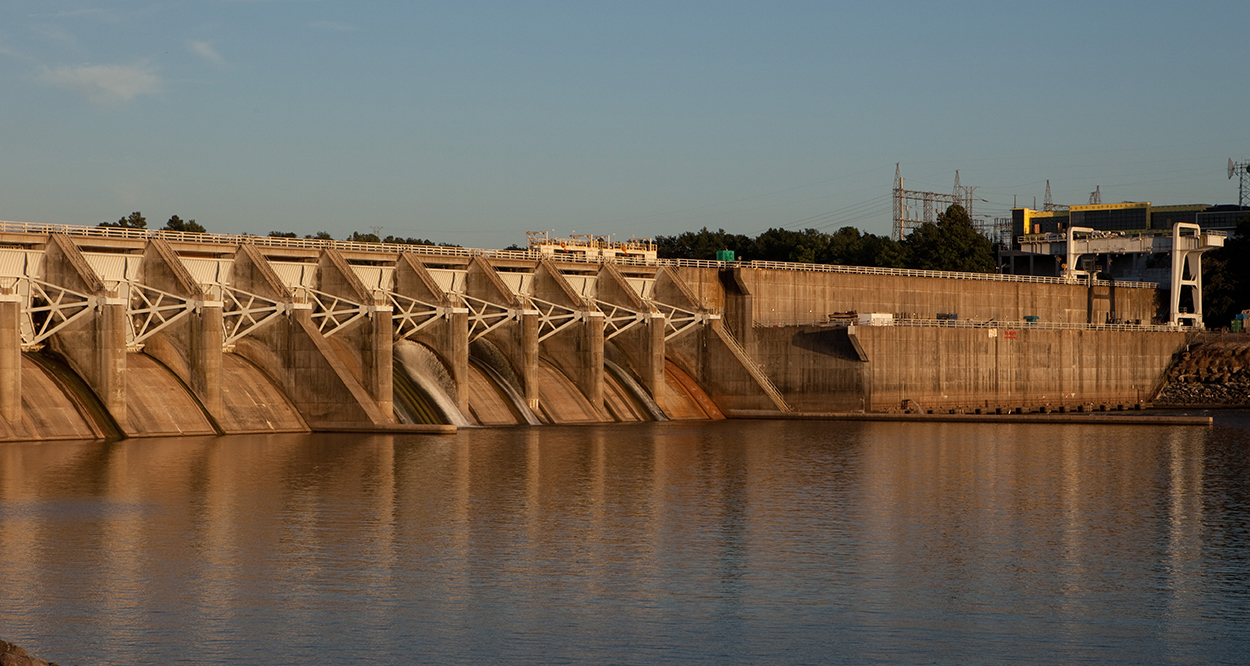News
National Hydropower Day
Aug 26, 2020

GRDA’s Robert S. Kerr Dam in the afternoon sunlight. This week, GRDA is sharing some of the benefits of hydroelectricity, in recognition of National Hydropower Day (Lee Buchsbaum/LMB Photography).
Power for Progress… a weekly column from the Grand River Dam Authority.
Each year, the National Hydropower Association (NHA) sets aside a day in August to recognize as National Hydropower Day. With its own 80-year history of hydroelectricity production, the Grand River Dam Authority is proud to join the NHA and other hydropower producers across the country in recognizing and sharing the many benefits of hydroelectricity.
Of course, GRDA has been in the hydroelectricity business from its earliest days. After all, Pensacola Dam – Oklahoma’s first hydroelectric facility — was built to harness the waters of the Grand River and has produced a lot of megawatts of electricity for the state in the last 80 years.
However, Pensacola is just one part of GRDA’s hydroelectric history. GRDA also built Robert S. Kerr Dam in the early 1960s and the Salina Pumped Storage Project (SPSP) in the late 1960s/early 1970s. All together, these resources play a role in meeting the electrical demands of customers all across the region.
According to the United States Geological Survey (USGS), hydroelectric facilities, like GRDA’s, “fit the concept of renewable energy” because these facilities use “running water, without reducing its quantity, to produce electricity.” At GRDA, that water is used repeatedly as it flows down the Grand River, through Pensacola Dam and Kerr Dam, and also as it is pumped up and stored at the SPSP.
Here are a few other benefits of hydroelectric, shared from energy.gov:
- Hydroelectric power is a domestic source of energy, allowing each state to produce their own energy without being reliant on international fuel sources. For GRDA, the hydro fuel source has always been the waters of Oklahoma’s Grand River.
- The energy generated through hydropower relies on the water cycle, which is driven by the sun, making it a renewable power source.
- Some hydropower facilities can quickly go from zero power to maximum output. Because hydropower plants can generate power to the grid immediately, they provide essential back-up power during major electricity outages or disruptions. GRDA has this ability with all of its hydroelectric units, at Pensacola Dam, Robert S. Kerr Dam and the Salina Pumped Storage Project.
- Of course, hydroelectricity also contributes to the storage of drinking water. Did you know that GRDA lakes serve as storage for 50 Oklahoma municipal water systems and rural water districts, including Tulsa? Without the presence of hydroelectric plants, that storage might not be available.
There are many other benefits but these are a few reasons why hydroelectricity remains an important part of GRDA’s generation portfolio.
GRDA is Oklahoma’s largest public power electric utility; fully funded by revenues from electric and water sales instead of taxes. Each day, GRDA strives to be an “Oklahoma agency of excellence” by focusing on the 5 E’s: electricity, economic development, environmental stewardship, employees and efficiency.

